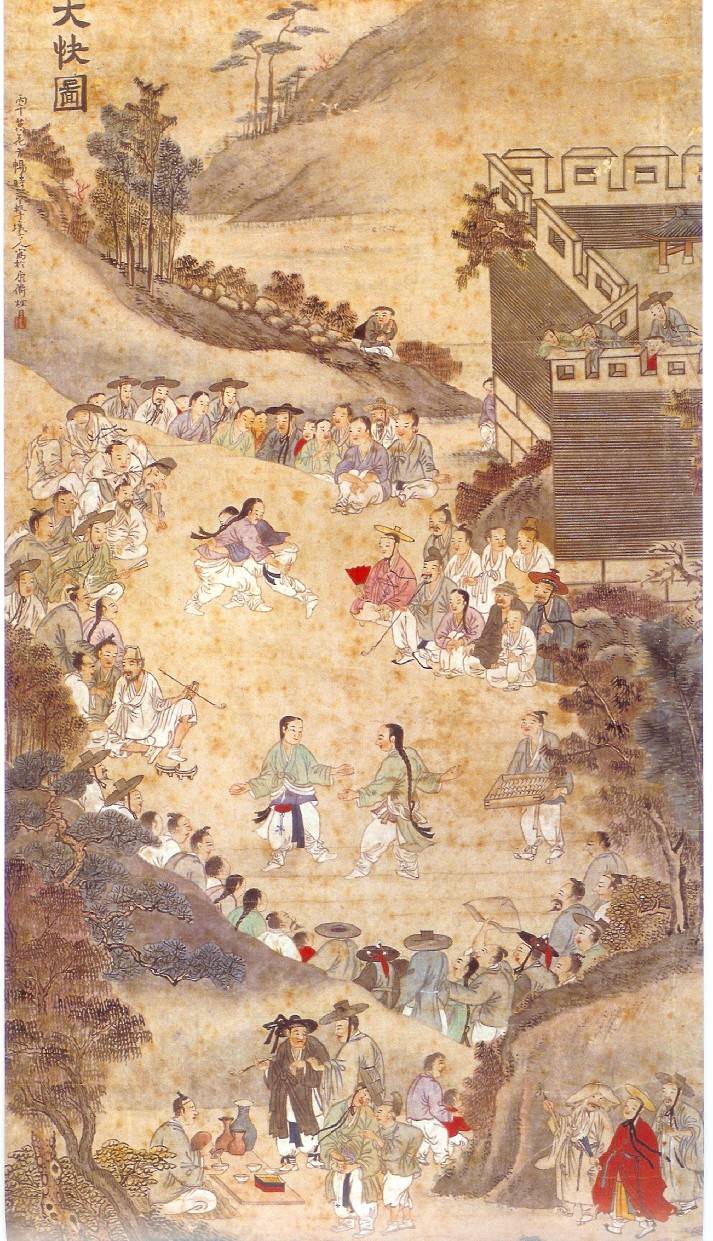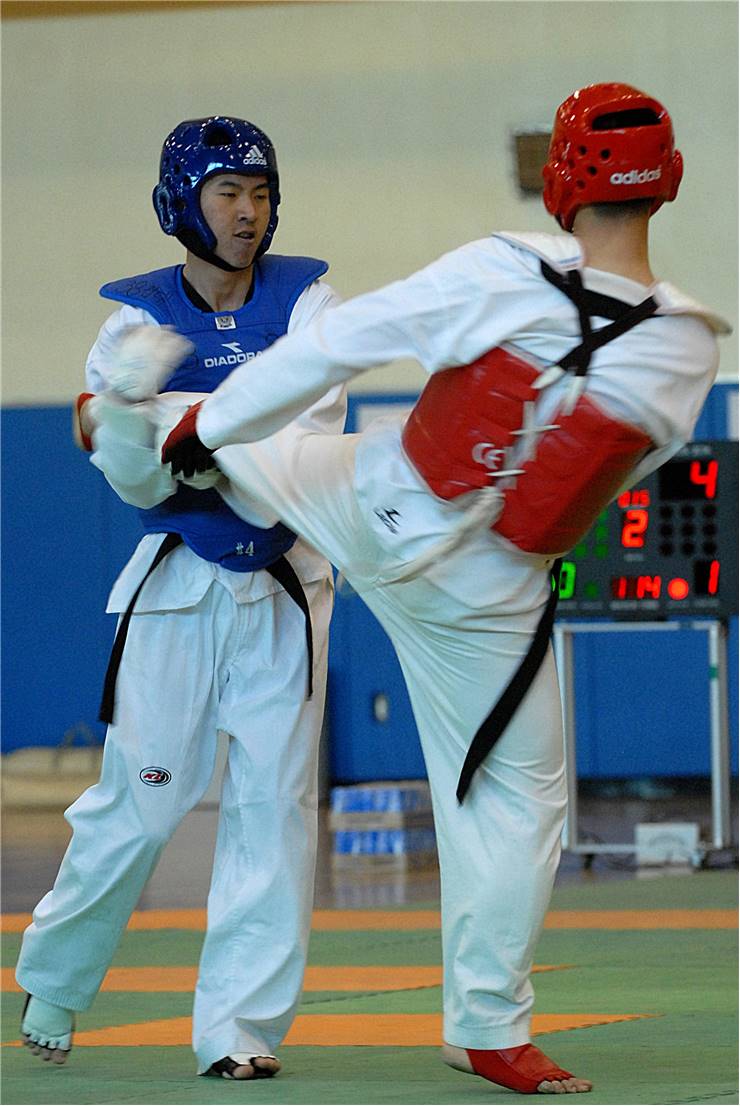History of Taekwondo - When Taekwondo was Invented?
Taekwondo can be defined as a bare-hand combat discipline that involves using the whole body. It is the unarmed combat technique for self-defense, which entails skillfully applied techniques, including punching, blocks, parrying actions with hands and feet, dodges, jumping kicks, etc. The meaning of Tae is “to kick” or “Smash with feet,” Kwon is “punching,” while Do means “ method” or “way.” However, Taekwondo does not just represent physical training, but also the development of one’s spirit that carries over into all aspects of life. It is regarded as a way of thinking and a life pattern involving strict discipline.
Although many historians teach that Taekwondo originated thousands of years ago in ancient Korea, it has been established that Taekwondo is a collection of somewhat similar unarmed martial arts techniques and starting points formed by Korean Grandmasters, including General Choi Hing Hi, upon returning to Korea from Japan following World War II. During their time in Japan, the Grandmasters learned Karate-Do (meaning way of China Hand). Those learned techniques set a foundation for a new martial art in 1955, officially named the newly unified and recognized Korean martial art called Taekwondo.
The origins of the Chinese martial arts are ascribed to a Monk from India called Bodhidharma. Based on old Chan Buddhist texts, Bodhidharma arrived in China in the 6th century AD to found a monastery at Shaolin-So. Then he started to teach breath control and meditation. Since his followers had difficulties practicing that challenging technique, he decided to teach them ways of strengthening their bodies and spirit. This method was later combined with Taoism and I-Ching to set a foundation for the Chinese martial arts of Kung-Fu, Tai Chi Chuan, and Kempo.
The first concrete evidence of Taekwondo in Korea dates back to the Three Kingdoms Period, a mural drawn on the wall of the Myung-Chong tomb in Tunsko. The tomb was built in the Goguryeo Kingdom in the 1st century. This mural depicts two young men sparring. In some other tombs from this period, similar murals were discovered in which we can see people practicing martial arts. According to these findings, Korea developed its martial art form before Bodhidharma set foot in China. Thus Taekwondo is of Korean origin.
Goguryeo used to be a powerful state in Northeast Asia with impressive military potential where martial arts’ importance was highly praised and kept elevated. For instance, some combat techniques, such as archery, swordsmanship, and spear fighting, were developed in this state. On the other hand, weaponless martial arts were also practiced in the Goryeo dynasty. Some of the most usual techniques that military officers were required to practice were Soobak, Byungsu, Subakhui, etc. This custom made an accepted way to the hiring process of government offices and promotions.
Soobak (Soo Bakh Do) was a primary form of Korean martial art between 600 A.D. and 1940. In the 14th century, Soobak was reformed and renamed Taekyon, which remained a paramount Korean martial art until 1909. That was the time when Japan invaded Korea. During the Japanese occupation, Korean martial arts were overpowered by Japanese-style martial arts.
During ancient Korean history, there were three kingdoms: Koguryo (37 B.C.-668 A.D.), Paekje (18 B.C.-600 A.D.), and Silla (57 B.C.-935 A.D.). After defeating Paekje in 660 A.D. and Koguryo in 668 A.D., the 24th king of Silla, Chin Heung, unified the kingdoms. An elite group of young noblemen called Hwa Rang played a significant role in the unification. They were trained in various weapons, for example, spears, bows, and swords. Hwa Rang was also mastering an unarmed type of combat called SooBak (Subak). It included mostly foot fighting techniques with some less present hand skills. The HwaRang eventually merged with SooBak and enriched it to form a more artistic way of fighting. This blend of armed and unarmed techniques was utilized to make warriors more competent at fighting their enemies.
Growth and development in martial arts occurred during the Koryo Dynasty. That was the time when unarmed combat surged in popularity. There are reasons to believe that SooBak was introduced in China, where it became known as KnownPup. Since the new techniques and mental disciplines were added to this major combat style, SooBak’s name was changed to SooBakGi. It became the preferred combat style of the general public and the military. As combat continued to be practiced, some new styles began to emerge. One of those styles was Tae Kyon, which introduced myriad new kicking techniques and was designed to be a fighting sport rather than just a discipline.
During the Yi Dynasty (1392 A.D. to 1910), due to the Chinese influence over the government and the Korean people, the country underwent a radical change from Buddhism (the dominating religion in Korea) to Confucianism. The influence of military leaders began to fade in favor of civilian statesmen who had different beliefs about the cultural development of their country. Eventually, people’s interest in martial arts started to decrease. To make conditions even more transparent, the country’s establishment banned all weapons and the study of martial arts to everybody except the military. That was a great downfall of martial arts in Korea, which lasted until August 2, 1910, when the Japanese successfully invaded the country and ended the dynasty of Yi.
During Japan’s rule in Korea, all competitive sports were banned. As an already familiar law, the only exception was the army, which was under Japanese control. In this period, some Japanese combat arts were presented in Korea, while SooBakGi kept being practiced secretively. As time passed and peace was established between the two countries, Japanese curricula were taught in every Korean educational establishment. The well-known Japanese martial arts were Kendo, Judo, Karate, and Aikido. The upcoming period was flourishing for both Korean and Japanese combat styles. Ultimately, Korea was freed from Japan’s colonial period on August 15, 1945, when Korean arts finally became independent.
After the independence, Korean leaders, who were also practitioners of Taekwondo, tried to secure their legitimacy by improving the discipline after August 15, 1945. Taekwondo Dojangs, formal training halls, started to appear and gather many martial arts students to conduct training. The Korean Taesudo Association was founded on September 16, 1961 (16 years after the independence). Some years later, the organization's name was changed to Korean Taekwondo Association.
The first time that Taekwondo became a demonstration sport was on September 17, 1988, at Seoul Olympics, the catalyst that promoted the sport globally. On September 4, 1994, Taekwondo became an official Olympic sport at the 103rd IOC Assembly in Paris. Six years later, at the Summer Olympics in Sydney, Taekwondo became a full medal sport. Interestingly enough, the rules of Taekwondo are regulated by World Taekwondo Federation and not by an external organization like most other Olympic sports.

